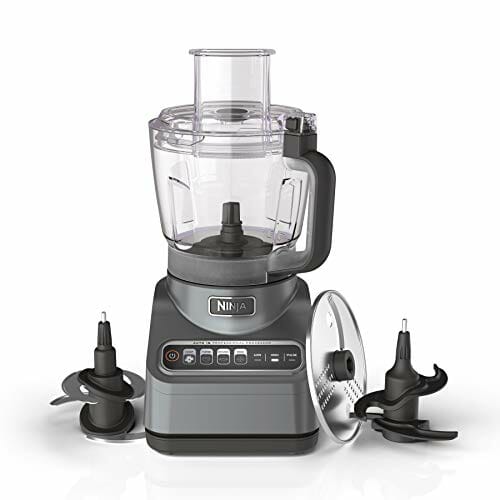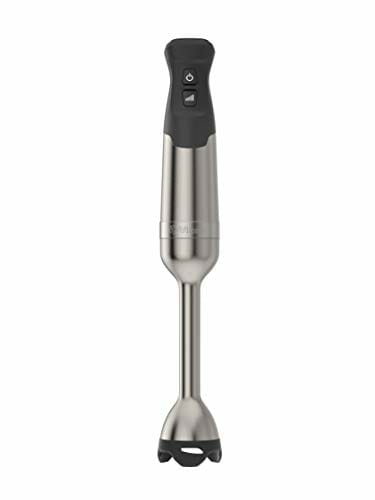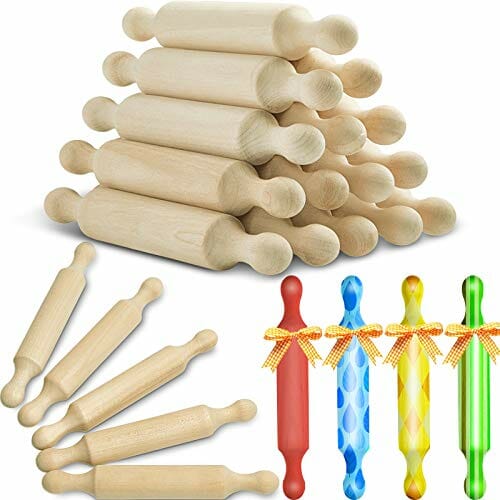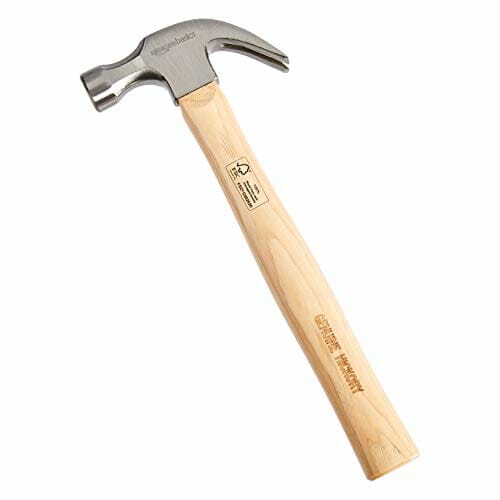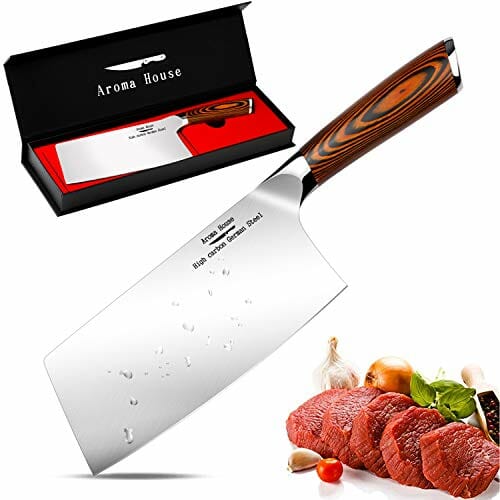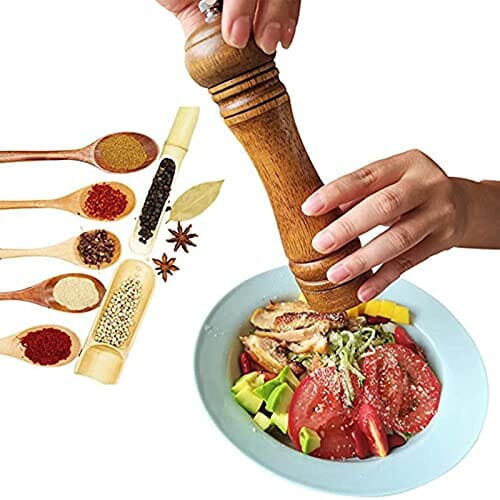Trying to up your coffee game by getting whole bean coffee and grinding coffee beans at home, but you find yourself in a pickle with a broken coffee grinder or no grinder at all?
In this article, I will introduce 11 unconventional ways on how to grind coffee beans without a grinder so that you can get back to the grind of making and enjoying Joe with freshly ground coffee.
Can You Brew Coffee Beans Without Grinding Them?
Let’s address the elephant in the room first: Do you have to use freshly ground coffee to brew a cup?
Essentially, you extract coffee compounds by having the coffee come into contact with hot water in a certain amount of time, surface area, and with a certain amount of force. So, technically, you can make a cup of Joe without grinding coffee beans.
However, ground coffee is very small pieces of the original coffee beans, giving them a bigger mass surface area than the latter for better extraction of flavors and aromas.
That means if you do attempt to brew whole beans, it’s going to take a significantly longer amount of time than ground coffee from the same beans.
So for drinks that call for an extra-coarse grind such as Cold Brew due to the extended 12 – 24 hour brew time, you can get away with using whole beans.
However, for your daily cup of Joe to recharge in the morning, you’d better grind your own coffee beans. You can check my ultimate grind size chart to navigate yourself with different brewing methods.
Is Pre-Ground Coffee Really That Bad?
Another question: Is fresh ground coffee really better? I mean, as long as you’re using coffee grounds, it should be fine, right?
Freshness is the reason why specialty coffee experts always advise you to opt for whole beans and grinding coffee right before brewing.
Gases like carbon dioxide are formed during the roasting process and are slowly released afterward. And once the coffee is ground, the degassing process is accelerated, turning it into stale coffee much faster than if it’s left as whole beans.
The staleness can considerably affect the flavor, aroma, and overall quality of the brewed cup of Joe.
Moreover, ground beans have a larger surface area, making pre-ground coffee more vulnerable to environmental factors such as moisture which can affect the beans’ quality.
How To Grind Coffee Beans Without A Grinder
That leads us to today’s dilemma: What can you use if you don’t have a coffee grinder?
Though grinders can provide the best ease of use and control and the most consistent grind, it’s not the end of the world if you don’t have a functional coffee grinder.
| Ease Of Use | Time | Grind Consistency | How Fine Can It Go? | |
| Food Blender | 4.5 stars | 4.5 stars | 2 stars | Coarse |
| Food Processor | 4.5 stars | 4.5 stars | 2.5 stars | Coarse |
| Immersion Blender | 3.5 stars | 4 stars | 2.5 stars | Medium-coarse |
| Mortar & Pestle | 3 stars | 2.5 stars | 4.5 stars | Fine |
| Rolling Pin | 2.5 stars | 2.5 stars | 3.5 stars | Fine |
| Hammer/Meat Tenderizer | 3.5 stars | 4 stars | 3 stars | Medium |
| Kitchen Knife | 1.5 stars | 1.5 stars | 2.5 stars | Medium |
| Pot/Pan | 3 stars | 4 stars | 2.5 stars | Medium-coarse |
| Pepper Mill | 3.5 stars | 1 star | 4.5 stars | Extra fine |
| Hand Mincer/Garlic Press | 3 stars | 2 stars | 3 stars | Medium |
| Free Coffee Grinder | 5 stars | distance-dependent | 5 stars | Extra fine |
1. A Food Blender
Can you use a blender or food processor to grind coffee beans? A blender has a set of rotating blades with speed and mixing controls, so you can expect it to work similarly to a blade grinder.
That means it can’t produce a consistent grind as well as burr grinders, but you can make do with it, nonetheless.
The blades of a food blender also have a limited reach, making them work better with liquid than just purely dry ingredients as the high speed can send the pieces shooting around inside and make very inconsistent cuts.
The continuous high-speed movements of the blades may also overheat the beans and their oils, adding an undesirable bitter taste to the mix.
The trick to pulling off grinding beans using a food blender is hit-and-run. Rather than grinding continuously until you get your desired result, turn on for a swift attack then quickly turn off for a short break interval and rinse and repeat.
Since you’re utilizing a machine, it takes a lot less effort than grinding manually. But the method is most suitable for a coarse grind.
Make sure to clean the blender well before using it to prevent unwanted flavor carry-overs.
How To Grind Coffee With A Food Blender
- Add a couple of scoops of coffee beans to your food blender depending on the size. Put the lid on.
- Set the blender to the medium-high speed or grinder setting if it’s available.
- Use the hit-and-run or pulsing technique to grind the beans to reach your desired grind size. During the intervals, you can tilt the machine side-to-side or shake it a bit to make sure the bigger pieces also get ground.
- Stop once you’ve achieved your desired grind. If you need more, move your ground beans to a bowl and repeat the process.
2. Food Processor
A food processor is a more capable and versatile version of the food blender as it can prepare ingredients in various ways, from simple chopping, shredding, and mixing to dough kneading.
When it comes to making coffee grounds, which it’s obviously not designed for, expect it to grind coffee beans as well as the blender and the blade grinder.
But, due to the blades’ versatility and the shape of the food processor, the device is better at handling dry ingredients than the easy-going blender.
Again, clean and dry your food processor well before the grind.
How To Grind Coffee With A Food Processor
- Add a couple of scoops of coffee beans to your food processor depending on the size. Put the lid on.
- Use the hit-and-run or pulsing technique to grind the beans to reach your desired grind size. During the intervals, you can tilt the machine side-to-side or shake it a bit to make sure the bigger pieces also get ground.
- Stop once you’ve achieved your desired grind. If you need more, move your ground beans to a bowl and repeat the process.
3. Immersion Blender
Another way to grind beans mechanically is using an immersion blender, though it can’t provide as much size consistency as you’d like.
But if you’re in a pinch, why not give the device a try? You’ll most likely get a medium-coarse grind for French Press at most. For a medium-fine texture or a super-fine grind and a more consistent texture, you can opt for some of my manual methods below, such as the mortar and pestle.
For this method to work, you would need a tall and narrow container so that the blades of the immersion blender can reach the beans.
You’ll also need to cover the top with some sort of cover or your hands to prevent the coffee beans from shooting out.
How To Grind Coffee With An Immersion Blender
Some immersion blenders come with their own containers. If not, use a sturdy enough one that can endure the blades and the shooting coffee beans.
- Add up to 2 tablespoons of coffee into the container.
- Insert the immersion blender into the container and cover with a lid or your hands.
- Turn it on and start mixing. Stop once in a while to check and shake the container for a less inconsistent grind.
4. Mortar And Pestle
The mortar and pestle, the old-fashioned milling method, lying around, has more use to them than just crushing, mincing, and mixing spices, herbs, and pastes in cooking.
If you have the mortar and pestle lying around at home, utilize them for coffee beans rather than to grind spices this time.
Though it definitely takes more effort and time (for both work and a hand break), you get to have perfect control over the force you can apply to crush the beans and the result is a relatively consistent grind.
Remember to clean and dry both tools before using them to prevent flavor carry-overs and damping the beans.
How To Grind Coffee With Mortar And Pestle
- Add up to 2 tablespoons of beans to the mortar as long as they don’t take up more than 1/4 of the space.
- Hold the pestle with your dominant hand for the best control. Use your other hand to keep the mortar in place while grinding.
- Gently press down and swirl the pestle to crush and smash the beans into smaller pieces.
- Start to increase the force in your press and swirl to turn the pieces into a finer grind. You can also pound the pestle onto the grounds now that the coffee can’t fly out of the mortar. Pay attention because the grind can turn fine much faster than you might expect.
- Stop once you’ve achieved your desired grind. If you need more coffee, move your ground beans to a bowl and repeat the process.
5. Rolling Pin
Another manual method is the old-fashioned rolling pin. If you live with anyone who loves to bake, you would likely have a rolling pin lying around in the kitchen.
It’s frequently used to flatten and roll doughs of pasta and pastries like cookies and pies. But today, the rolling pin can also be utilized to crush and grind coffee beans.
With the help of a Ziploc bag and some elbow grease, the rolling pin can help you achieve a medium-fine grind and even fine powder grind and desired consistency as long as you check often enough to make sure all targets are finished.
The process is pretty similar to crushing graham crackers to make a pie crust if you’re familiar with baking.
How To Grind Coffee With A Rolling Pin
- Add your desired amount of coffee beans into the Ziploc bag without overfilling it. You can also use a simple plastic bag or anything that can keep the coffee grounds from spilling or flying out. Seal the coffee bag and make sure not enough air is inside for the bag to look inflated. You can also use 2 sheets of parchment paper and fold the edges to keep the beans inside.
- Lay the bag down onto the cutting board or counter and spread out the beans to make sure the surface is relatively even.
- Add a bit of elbow grease and hold the rolling pin with your dominant hand and use your other hand to hold the bag in place.
- Press down on the bag with the rolling pin like you would using a hammer to break the beans into smaller pieces first.
- Firmly roll the rolling pin over the bag with pressure and check once in a while until the coffee grounds have reached the desired consistency. You can shake the bag or roll the bigger coffee grounds to the middle to keep them all in check.
6. Hammer Or Meat Tenderizer
In the previous method, I mentioned crushing the coffee beans by applying pressure to the bag like you would with a hammer. Here, I’ll introduce how to use a real hammer or meat tenderizer for the job of grinding coffee beans without a grinder.
But these rough-around-the-edges items can’t really grind beans to powdered sugar-fine powder grind consistency. That is due to the limit to what you can possibly do with them, which is just pressing down on the beans to break them into smaller pieces.
So, at most, you can expect a medium grind or coarser for your Cold Brew, French Press, or drip coffee makers.
If your desired consistency is finer, you can apply another method on the coffee grounds until they fit the coffee maker you have in mind such as espresso machines.
Again, since the hammer and meat tenderizer aren’t the most delicate tools, you can put a cloth in between the bag and the tools to prevent them from tearing the bag.
You should also do this on top of a sturdy cutting board rather than directly on your kitchen counter to avoid any possible damages. I don’t think a cup of coffee is worth the money for redoing your kitchen.
How To Grind Coffee With A Hammer Or Meat Tenderizer
- Add how much coffee you’ll be using to a Ziploc bag, plastic bag, or freezer bag. Seal the bag.
- Lay the bag down onto the cutting board and spread out the beans to make sure the surface is relatively even. You can put a cloth on top.
- Press the hammer or meat tenderizer firmly down firmly on the bag to grind beans and check once in a while until they’ve reached your desired grind consistency. You can shake the bag to reach the leftover big pieces.
7. Kitchen Knife
Whether you cook at home often or not, you should have a knife. But this trick works a lot better with a wide blade kitchen knife and is a lot easier if you’re an avid cook or professional chef even.
The trick is a bit similar to crushing garlic, but instead of slamming the flat blade of the knife on top of the garlic cloves, you’ll firmly press the knife on the beans to crack it instead, like the hammer trick I explained above.
Since the coffee bean is a lot harder, there’s a higher risk that it will bounce and fly away. So an average Joe might not be skillful enough to master this. But feel free to give it a try. You might handle the knife better than you expect.
Again, this method will likely give you a medium size at best. For finely ground coffee and easier tricks, check out my other methods in the article.
How To Grind Coffee With A Kitchen Knife
- Place the coffee beans on a sturdy cutting board.
- Lay the blade of a large kitchen knife on top of the beans. You can lay a kitchen towel on top of the knife to prevent the crushed beans from flying away.
- Apply pressure on the knife to crush them. Check once in a while to get the most uniform grind possible.
- If the knife isn’t big enough to have covered all of the beans, move your ground beans to a bowl, add more, and repeat the process.
8. Pot Or Pan
If push comes to shove, here’s a method everyone can get behind that also utilizes the same pressure application technique.
It’s pretty much the same as the hammer and kitchen knife method but this time, you can crush a lot more coffee beans at once, great for when you need a large batch of emergency coffee.
Frying pans! Who knew, right?!
How To Grind Coffee With A Pot Or A Pan
- Lay the number of coffee beans you need on top of a large cutting board. You can lay a kitchen towel or parchment paper on top of the beans if you don’t want the bottom of the pot or pan to directly touch them.
- Hold the pot or pan firmly with your hands (not the handle BTW) and apply pressure to crush the coffee. Check once in a while and move the crushed beans around for the best consistency possible.
9. Pepper Mill
Every household should have a pepper mill. You can also easily grab a cheap one at the grocery store or dollar store for your pepper needs and today’s coffee needs.
Some may doubt whether this would work as the size of the coffee beans can be bigger than peppercorns, which makes them unsuited for being ground in the pepper mill.
So this method takes more than one direct step. If the beans don’t fit your pepper mill, you’ll have to crush them into smaller pieces using one of our previous manual methods first, such as a hammer, a kitchen knife, or a rolling pin.
But, the resulting consistency and a finer grind size capability ranging from medium grind to fine grind using the pepper mill will be worth the extra step.
Make sure to clean and dry the pepper mill well before using, unless you’d like some scent of pepper in your cup of Joe, in which case, be my guest.
How To Grind Coffee With A Pepper Mill
- Smash the coffee beans into smaller pieces using other methods if needed.
- Add the pieces to the pepper mill and grind them into a bowl until you’ve had enough to brew coffee. Rinse and repeat if you need more.
10. Hand Mincer Or Garlic Press
Another manual method you can consider trying out is the hand mincer or garlic press.
While you may not have a hand mincer AKA meat mincer, the old-timey manual device used for making minced meat, at home, you may have the garlic press, and they technically work the same way.
The ingredients are forced to go through a grid with many small holes. The coffee bean is much harder than meat and garlic, however. That means you’ll need to put in more hand power.
You won’t get a medium-fine or finer beans right away either. The first result is likely extra coarse fresh beans, suitable for making Cold Brew. But the more times you put them through the grinding process, the finer they’ll become.
Clean and dry the devices well before you use them to grind beans to prevent meat and garlic flavor carryovers. Uh uh – doesn’t sound too appetizing to me.
How To Grind Coffee With A Hand Mincer Or Garlic Press
- Add a few coffee beans into the hand mincer or garlic press.
- Place a bowl under the exit and hold the handle of the devices with your dominant hand.
- Firmly operate the device by either turning the crank or squeezing the handle to grind beans into the bowl.
- Repeat the process with the ground beans until you achieve your desired texture.
- Repeat the process with more whole coffee beans until you have enough for your morning cup.
11. Free Coffee Grinding
While these tips can work when you have to make do without a grinder at home, they certainly take more time and effort than the result can be disappointing if your expectation is high.
So here’s my last tip for coffee lovers everywhere: If you don’t mind going out, try visiting your local Starbucks or grocery stores to use their coffee grinders for free. But in the case of Starbucks, it’s only possible if it’s a sealed Starbucks coffee bag.
If they do provide that service, you likely can get your coffee freshly ground for any coffee brewer and coffee filter, from French Press coffee to table salt sizes for a delicious cup of Moka Pots and Turkish coffee
To Wrap Up
Those are 11 methods to grind coffee beans without a grinder should you get desperate for a cup of joe. It’s better to find alternatives to satisfy your coffee cravings than to let the beans go to waste.
However, if you want to save yourself ever getting into this situation, go check out my coffee grinder recommendations here.



